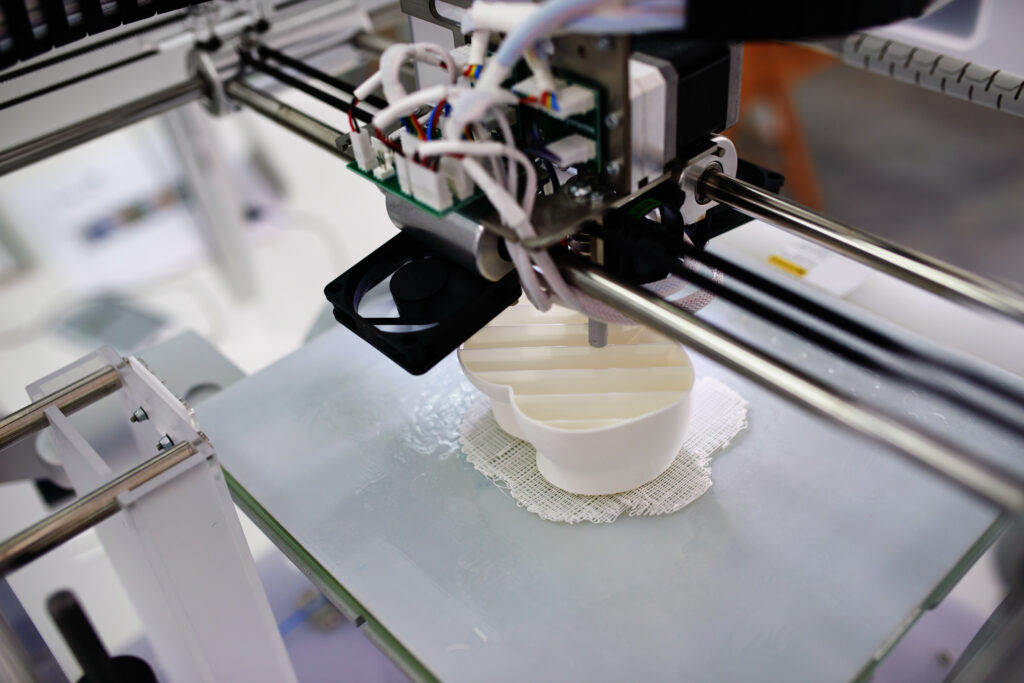by STELLA CANFIELD, UF/IFAS correspondent
For years, 3D printers have become an increasingly useful technology for creating everything from roller coaster models to houses. But what about printing food?
Adam Watson and Ziynet Boz, two UF/IFAS professors in the agricultural and biological engineering department, have been rethinking the power of 3D printers, specifically their ability to print food.
One of these 3D printers sits in their lab ready for use. With the touch of a fingertip, the machine beeps and an array of designs populate on the touchscreen. Once a design is selected, the mechanical arm makes a high-pitched whirr as it begins its meticulous work of careful layering, first starting with the base. Then, a viscous food substance like mashed potatoes is squirted out of cylinders of varying nozzle sizes until the design is completed.
With embedded stock designs and the ability to upload your own, an unprecedented level of control is possible for people looking to up their plating skills.
But its benefits may extend beyond creative experimentation in food presentation.
For instance, the machine may also be useful for those who suffer from dysphagia, or difficulty swallowing.
Those affected by dysphagia often rely on foods that are soft and moist like yogurt or mashed fruits and vegetables. However, these shapeless foods can be unappetizing.
With a 3D food printer, shape and visual appeal can be brought back. For example, a pureed carrot can be shaped again to look like a regular carrot.
Additionally, 3D food printers may be used for humanitarian purposes, such as during times of war or famine. Dehydrated foods can be restored to their original state with the addition of water and be 3D printed into a design that revives the appeal of the snack or meal.
But there are other benefits as well.
3D food printers also give people the ability to pick and choose what goes inside the foods they eat.
“It could be a great way for parents to ensure their children are getting the necessary nutrients from fruits and vegetables,” Boz says. Instead of having to buy products with hidden fruits and vegetables, parents can make their own.
With a 3D food printer, people also have more control over their food waste.
Leftover viscous foods can be put into the 3D food printer for a new shape that is both appealing and sustainable – limiting the amount of food that is left uneaten.
Leftover food can also be printed into tableware. Like bread bowls, a viscous substance like mashed potatoes can be shaped into a cup, cooked and used to serve food.
“If you have edible tableware, it eliminates the need to wash dishes, which then leads to less water being used or wasted,” Watson says.
While the machine reflects several technological advancements in food, there are still advancements to be made, one being the ability to cook the food while or after printing to save time on food preparation. Another is simply getting 3D food printers to the point where they’re just like any other household kitchen appliance – affordable, common and useful.

